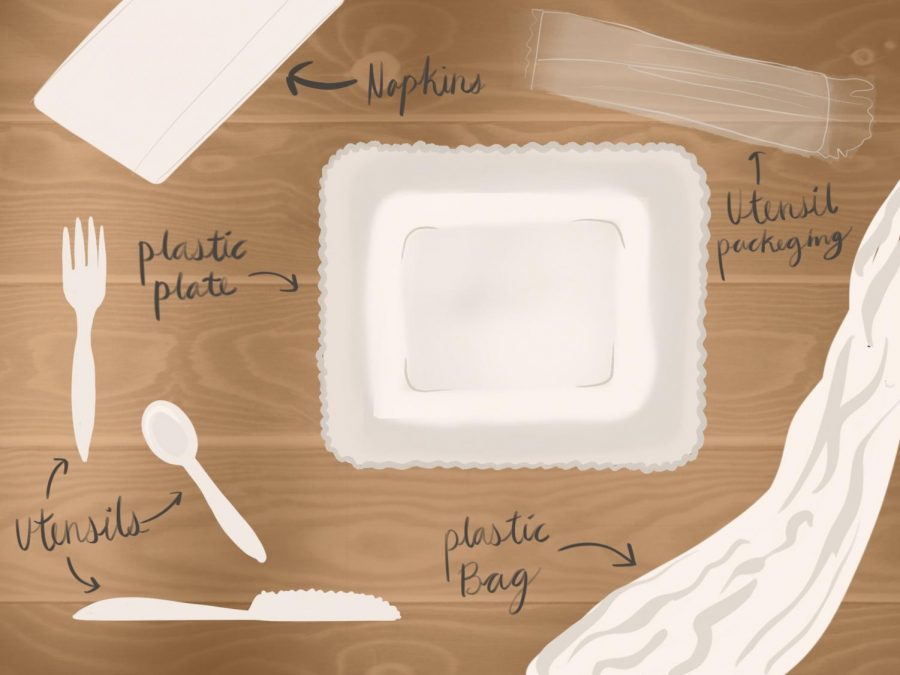OPINION: People should try to find alternatives to food delivery, which produces an abundance of plastic waste
Food delivery often uses plastic containers, which can harm the environment.
Takeout food is convenient, easy and most of the time, delicious. However, every order uses plastic to make the meal efficient for transport. Some of it is recyclable or compostable but most is waste. All of this waste is not a problem people can solve with recycling alone.
The rise of food delivery services like Doordash, GrubHub, and Uber Eats, which makes ordering to-go easier than ever, isn’t helping. Research from the U.S. Plastic Control shows that the US online food delivery market will grow 6.5 percent year-over-year from $22 billion in 2019 to $28 billion by 2023. GrubHub alone earned $5.1 billion engrossed food sales in 2019 – a 34 percent increase from $3.8 billion in 2017. Similarly, UberEats will balloon 149 percent to $1.5 billion.
The problem is that recycling isn’t the silver bullet the power plastics industry has made it out to be. While the average American generates 234 pounds of plastic waste every year, no more than 9 percent is recycled. The number is even lower now that China, once the largest buyer of America’s waste, has declared all but the highest quality of plastic forbidden. Another 12 percent of plastic is incinerated, resulting in toxic fumes. However, the majority of plastic people use everyday are buried in landfills, pollute coastlines and oceans, or befoul drinking water and the food chain.
Those little containers and wrappers may not seem like a big deal, but according to the U.S. Environmental Protection Agency, packaging makes up the largest category of municipal waste. On top of this, single-use items make up another 10 percent of U.S. discards. This kind of mindless consumption has a big impact on climate change.
Roughly 29 percent of the nation’s greenhouse gas emissions come from the way Americans make, consume and dispose of single-use products, which is more than the emissions from heating homes or driving cars. Considerable energy and resources are used to produce single-use items, which are used only for a few minutes or even a few seconds before they become trash. And when single-use items enter a landfill, all that paper and plastic is destroyed and more raw materials are extracted to replace it.
Takeout creates a lot of trash, but it doesn’t have to. A few ways to reduce the impact of plastic from takeout include using bulk condiments instead of small packets, not over-packaging things, using compostable containers instead of plastic, drinking from washable and reusable water bottles and saying “No” to disposable utensils, napkins and straws.
With the mounting garbage problem increasing yearly, it is important for consumers to start adapting to more reusable materials in day-to-day life. The USPC estimates around 80 percent of plastic in water comes from land and is carried into the water systems, causing issues for both people and animals.
One little change can have a big impact on the waterways and animals. With the ongoing COVID-19 pandemic happening, now is a perfect time to integrate change. Relying on takeout everyday is not only increasing single-use plastics but it is also making people lazier. This is an opportunity to increase self-sufficiency and learn how to cook rather than relying on take-out and single-use plastic items.


